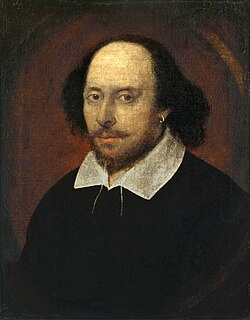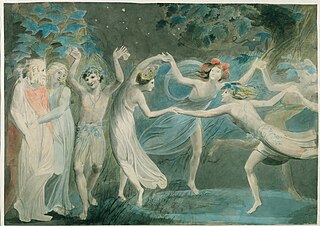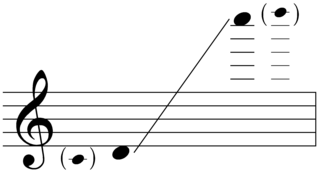Heimdall's Trumpet is a concerto for trumpet and orchestra by the American composer Christopher Rouse. It was commissioned by the Chicago Symphony Orchestra for its principal trumpeter Christopher Martin. The piece was completed January 21, 2012 and premiered December 20, 2012 at Symphony Center in Chicago.
Rhapsodies for Orchestra is a single-movement orchestral composition by the American composer Steven Stucky. The work was jointly commissioned by the New York Philharmonic and the BBC for the Philharmonic's European tour in August and September 2008. The piece had its world premiere August 28, 2008 in Royal Albert Hall at The Proms, with the New York Philharmonic performing under conductor Lorin Maazel.
The Violin Concerto is a concerto for violin and orchestra in three movements by the American composer Elliott Carter. The work was jointly commissioned by the San Francisco Symphony and the violinist Ole Bøhn. It was completed February 26, 1990 in Waccabuc, New York, and was premiered May 2, 1990 in San Francisco, with conductor Herbert Blomstedt leading Bøhn and the San Francisco Symphony. The piece won the 1994 Grammy Award for Best Classical Contemporary Composition.
The Violin Concerto is a concerto for violin and orchestra by the American composer Mason Bates. The work was commissioned by the Pittsburgh Symphony Orchestra and violinist Anne Akiko Meyers. It was premiered December 7, 2012, with Meyers and the Pittsburgh Symphony performing under conductor Leonard Slatkin.
Liquid Interface is a symphony in four movements for electronica and orchestra by the American composer Mason Bates. The work was commissioned by the National Symphony Orchestra and was premiered February 22, 2007 in Washington, D.C., with the orchestra led by conductor Leonard Slatkin. The piece is dedicated to composer John Corigliano.
Alternative Energy is a symphony for electronica and orchestra in four movements by the American composer Mason Bates. The work was commissioned by the Chicago Symphony Orchestra, for whom Bates was then composer-in-residence. It was premiered by the orchestra under conductor Riccardo Muti at Symphony Center in Chicago, February 2, 2012.
Anthology of Fantastic Zoology is an orchestral symphony by the American composer Mason Bates. The work was commissioned by the Chicago Symphony Orchestra, for whom Bates was then composer-in-residence. It was premiered June 18, 2015 at Symphony Center in Chicago, with the Chicago Symphony Orchestra performing under conductor Riccardo Muti, to whom the work is dedicated. The piece is based on the eponymous book by Jorge Luis Borges.
Night Ferry is an orchestral composition in one movement by the British-born composer Anna Clyne. The work was commissioned by the Chicago Symphony Orchestra, for which Clyne was then composer-in-residence. It was first performed February 9, 2012 at Symphony Center, Chicago by the Chicago Symphony Orchestra under conductor Riccardo Muti.
The Seamstress is a concerto for solo violin and orchestra by the British-born composer Anna Clyne. The work was commissioned by the Chicago Symphony Orchestra, for which Clyne was then composer-in-residence. It was first performed May 28, 2015 at Symphony Center, Chicago by the violinist Jennifer Koh and the Chicago Symphony Orchestra under conductor Ludovic Morlot. The Seamstress marks the second collaboration between Clyne and Koh, who had previously premiered Clyne's double violin concerto Prince of Clouds in November 2012.
Spangled Unicorn is a composition for brass ensemble by the British-born composer Anna Clyne. The work was commissioned by the Chicago Symphony Orchestra, for which Clyne was then composer-in-residence. It was first performed on March 21, 2011 at Symphony Center, Chicago by the brass section of the Chicago Symphony Orchestra.
Circle Map is a composition for orchestra and electronics by the Finnish composer Kaija Saariaho. The work was jointly commissioned by the Royal Concertgebouw Orchestra, the Boston Symphony Orchestra, the Gothenburg Symphony Orchestra, the Orchestre National de France, the Royal Scottish National Orchestra, and the Stavanger Symphony Orchestra. It was first performed at the Holland Festival in Gashouder, Amsterdam on June 22, 2012, by the Royal Concertgebouw Orchestra under the conductor Susanna Mälkki.
Soundings is an orchestral composition by the American composer Elliott Carter. The work was commissioned by the Chicago Symphony Orchestra for their final season with the conductor Daniel Barenboim as music director. It was first performed on October 6, 2005 at the Symphony Center, Chicago, by Barenboim and the Chicago Symphony Orchestra.
The Symphonia: sum fluxae pretium spei is an orchestral triptych by the American composer Elliott Carter. Its three movements were composed between 1993 and 1995. The complete work was first performed on April 25, 1998 at Bridgewater Hall, Manchester by the BBC Symphony Orchestra under the conductor Oliver Knussen. The second movement "Adagio tenebroso" was a finalist for the 1996 Pulitzer Prize for Music.
The Symphony No. 6 is the sixth symphony by the American composer William Schuman. The work was commissioned by the Dallas Symphony League and was given its world premiere by the Dallas Symphony Orchestra under the conductor Antal Doráti on February 27, 1949.
Campane di Ravello is a short orchestral composition by the American composer John Corigliano. The work was commissioned by the Chicago Symphony Orchestra for the 75th birthday of its then music director Georg Solti. Its world premiere was given by the Chicago Symphony Orchestra under the direction of Kenneth Jean on October 9, 1987.
Parada is an orchestral composition by the Finnish composer Magnus Lindberg. The piece was composed for the music festival Related Rocks which celebrates the works of Lindberg and related composers. Its world premiere was given at The Anvil, Basingstoke on February 6, 2002 by the Philharmonia Orchestra under the direction of Esa-Pekka Salonen, to whom the work is dedicated.
Quickening is a cantata for countertenor, two tenors, two baritones, children's choir, chorus, and orchestra by the Scottish composer James MacMillan. The work was co-commissioned by The Proms and the Philadelphia Orchestra and was completed in 1998. Its world premiere was performed by the Hilliard Ensemble, the BBC Symphony Orchestra & Chorus, and the Westminster Cathedral Boys' Choir under the direction of Andrew Davis at Royal Albert Hall, London, on September 5, 1999. The journalist Damian Thompson of The Spectator described it as "one of MacMillan's masterpieces."
The Cello Concerto is a composition for cello and orchestra by the Finnish composer Esa-Pekka Salonen. The work was co-commissioned by the Chicago Symphony Orchestra, the New York Philharmonic, the Barbican Centre, and the Elbphilharmonie. It was completed in 2017 and was first performed by the cellist Yo-Yo Ma and the Chicago Symphony Orchestra under the direction of Salonen on March 9, 2017. The piece is dedicated to Yo-Yo Ma.
All These Lighted Things is an orchestral composition by the American composer Elizabeth Ogonek. The work was commissioned by the Chicago Symphony Orchestra, for which Ogonek co-serves as Mead composer-in-residence with the composer Samuel Adams. The piece was given its world premiere by the Chicago Symphony Orchestra under the direction of Riccardo Muti on September 28, 2017.
The Low Brass Concerto is a concerto for four solo low brass instruments and orchestra by the American composer Jennifer Higdon. The work was commissioned by the Chicago Symphony Orchestra for their renowned low brass section and co-commissioned by the Baltimore Symphony Orchestra and the Philadelphia Orchestra. It was composed in 2017 and was first performed by the Chicago Symphony Orchestra under the direction of Riccardo Muti on February 1, 2018.







